
The bulbuls are members of a family, Pycnonotidae, of medium-sized passerine songbirds, which also includes greenbuls, brownbuls, leafloves, and bristlebills. The family is distributed across most of Africa and into the Middle East, tropical Asia to Indonesia, and north as far as Japan. A few insular species occur on the tropical islands of the Indian Ocean. There are 166 species in 32 genera. While different species are found in a wide range of habitats, the African species are predominantly found in rainforest, whereas Asian bulbuls are predominantly found in more open areas.

Spoonbills are a genus, Platalea, of large, long-legged wading birds. The spoonbills have a global distribution, being found on every continent except Antarctica. The genus name Platalea derives from Ancient Greek and means "broad", referring to the distinctive shape of the bill. Six species are recognised, which although usually placed in a single genus have sometimes been split into three genera.

The Gruiformes are an order containing a considerable number of living and extinct bird families, with a widespread geographical diversity. Gruiform means "crane-like".

The magpie-robins or shamas are medium-sized insectivorous birds in the genus Copsychus. They were formerly in the thrush family Turdidae, but are now treated as part of the Old World flycatcher family Muscicapidae. They are garden- and forest-dwelling species found in Africa and Asia.

John Edward Gray was a British zoologist. He was the elder brother of zoologist George Robert Gray and son of the pharmacologist and botanist Samuel Frederick Gray (1766–1828). The standard author abbreviation J.E.Gray is used to indicate this person as the author when citing a botanical name. The same is used for a zoological name.

The great albatrosses are seabirds in the genus Diomedea in the albatross family. The genus Diomedea formerly included all albatrosses except the sooty albatrosses, but in 1996 the genus was split, with the mollymawks and the North Pacific albatrosses both being elevated to separate genera.

Ardea is a genus of herons. These herons are generally large in size, typically 80–100 cm or more in length.

The Ophidiasteridae are a family of sea stars with about 30 genera. Occurring both in the Indo-Pacific and Atlantic Oceans, ophidiasterids are greatest in diversity in the Indo-Pacific. Many of the genera in this family exhibit brilliant colors and patterns, which sometimes can be attributed to aposematism and crypsis to protect themselves from predators. Some ophidiasterids possess remarkable powers of regeneration, enabling them to either reproduce asexually or to survive serious damage made by predators or forces of nature. Some species belonging to Linckia, Ophidiaster and Phataria shed single arms that regenerate the disc and the remaining rays to form a complete individual. Some of these also reproduce asexually by parthenogenesis.
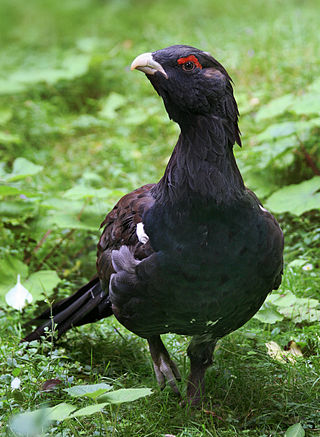
Tetrao is a genus of birds in the grouse subfamily known as capercaillies. They are some of the largest living grouse. Feathers from the bird were used to create the characteristic hat of the bersaglieri, an Italian ace infantry formation.
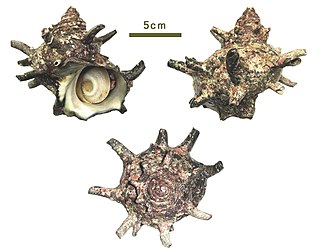
Turbinidae, the turban snails, are a family of small to large marine gastropod molluscs in the superfamily Trochoidea.

Calliostomatidae is a family of sea snails within the superfamily Trochoidea and the clade Vetigastropoda.
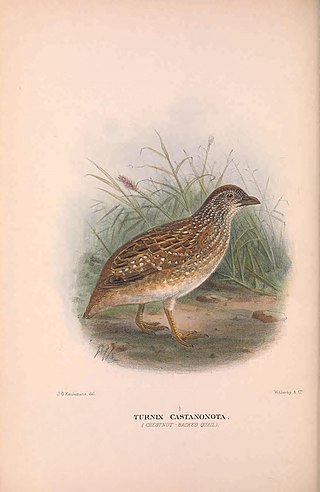
The chestnut-backed buttonquail is a species of bird in the family Turnicidae. It is endemic to Australia.

Lipaugus is a genus of birds in the family Cotingidae.
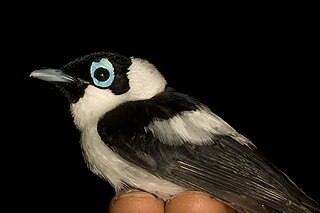
Arses is a genus of monarch flycatchers in the family Monarchidae. The genus is restricted to forest and second growth on the island of New Guinea, a few surrounding islands and northern Queensland, Australia. The genus is separated by their frilled necks, fleshy blue eye wattles and delicate pendent nests. They also have a distinctive foraging technique, hopping up tree trunks in a spiral fashion.

Tanygnathus is a genus of parrots in the Psittaculini tribe, of the superfamily of Psittacoidea.
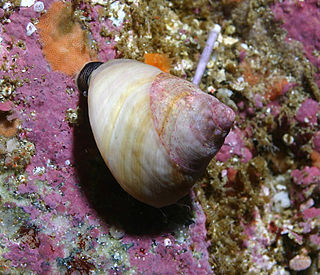
Trochoidea is a superfamily of small to very large vetigastropod sea snails with gills and an operculum. Species within this superfamily have nacre as the inner shell layer. The families within this superfamily include the Trochidae, the top snails. This superfamily is the largest vetigastropodan superfamily, containing more than 2,000 species.

Cerithiidae, common name the cerithiids or ceriths, is a large family of medium-sized marine gastropods in the clade Sorbeoconcha.
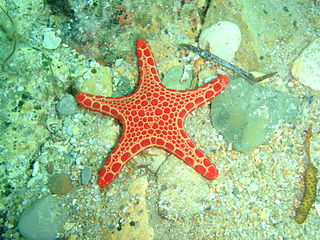
Goniasteridae constitute the largest family of sea stars, included in the order Valvatida. They are mostly deep-dwelling species, but the family also include several colorful shallow tropical species.
Calliostomatinae is a subfamily of gastropods, belonging to the family Calliostomatidae.
Brissopsis is a genus of echinoderms belonging to the family Brissidae.


















